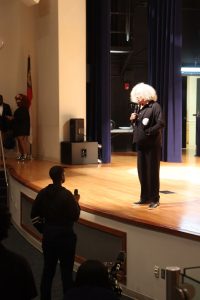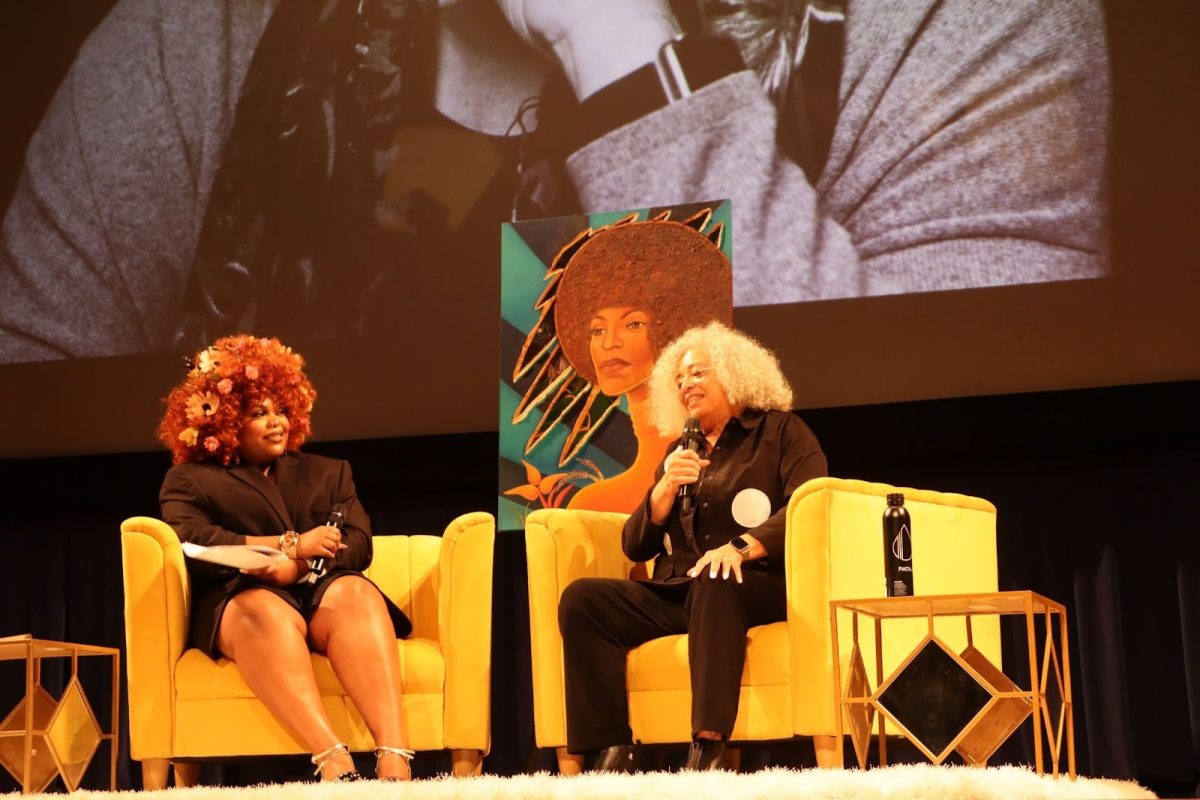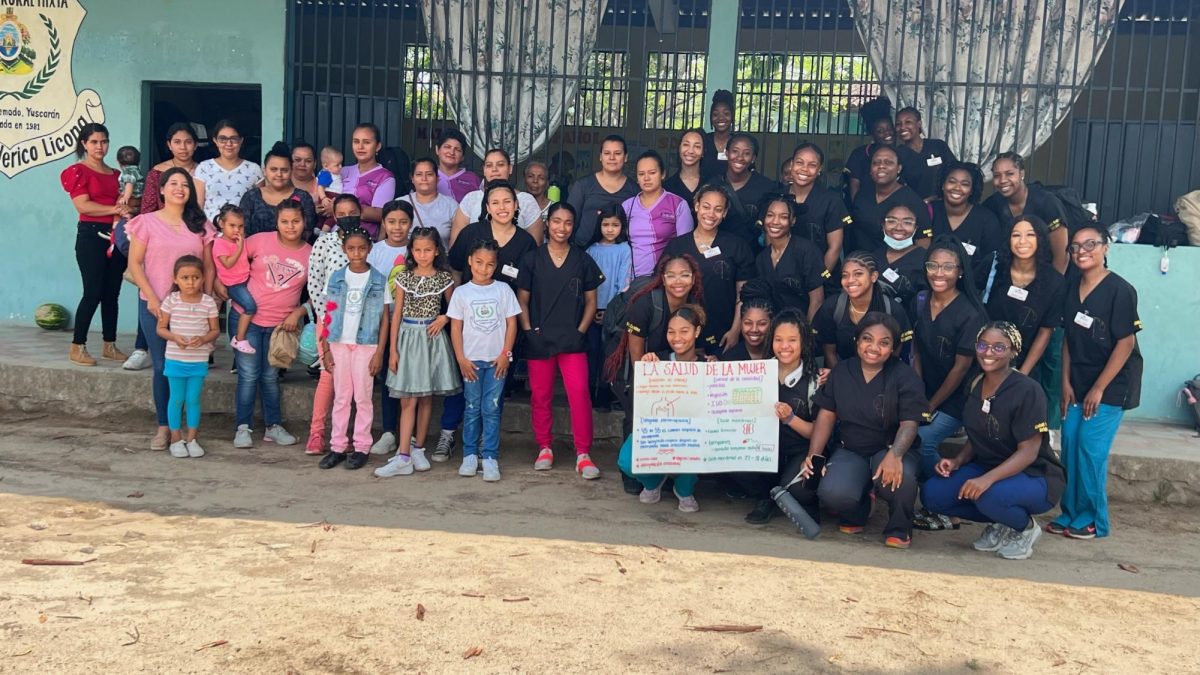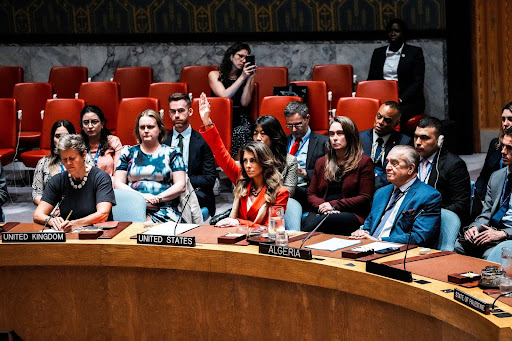Even with silver hair and a gentle grace that comes with age, Dr. Angela Davis embodied the same fiery commitment to justice that has defined her life’s work as she discussed the importance of the arts and their power to shape culture during a visit to N.C. A&T on Wednesday.
Davis spoke with visual arts Professor Jessica Kelly as part of the lecture series Arts, Activism, & Wellness With Angela Davis on Oct. 15 in Harrison Auditorium.
The College of Arts, Humanities, and Social Sciences, with a focus on the art department, powered Davis’s visit.
SUAH African Dance Theatre opened the series with a traditional West African dance performance that was followed by an “Invest in the Arts” promotional short film before Davis was introduced.
Kelly began the conversation with simple, humanizing questions, such as asking Davis about her favorite color and the film that has most impacted her as a Black woman.
“When I was a teenager I saw ‘Black Orpheus.’ It had to have been released sometime in the 1950s. I remember being really struck by the beauty of that film,” Davis said.
The questions soon shifted to her roots in activism, dating to the days of her upbringing in Birmingham, Alabama. Davis’s neighborhood was nicknamed “Dynamite Hill” for the number of homes targeted by the Ku Klux Klan.
“My mother was an activist; my mother was involved in the Southern Negro Youth Congress. It organized in the South; it paved the way for what we know as the Civil Rights Movement to emerge into what it became in the 1960s.”
Davis moved north to attend Brandeis University in Massachusetts, where she studied philosophy with Herbert Marcuse. As a graduate student at the University of California, San Diego, in the late 1960s, she joined several groups, including the Black Panthers. She dedicated most of her time to working and organizing with the Che-Lumumba Club, the all-Black branch of the Communist Party.
“Black women have been in leadership for a very long time; it has just not been acknowledged,” she said. “We just assume that all leadership efforts come from men… Black women constituted something like two-thirds of the Black Panther Party.”
At the focal point of the discussion was Davis’s relationship with art. Her connection with art is through philosophy, more specifically, the aesthetics medium. Both aesthetics and critical theory helped shape her views and stances during the height of her career in the latter half of the ’60s.
“Sometimes we aren’t even aware of the way we are affected by institutions like the prison industrial complex, like the police, and the retributive character of our justice system,” she said. “The justice system that we’ve been living with in this country is one that encourages violence.”
Students, faculty and members of the Greensboro community sat in silence, holding onto every word Davis spoke. Sophomore honors marketing student Avery Betts said she was in awe of Davis’s wisdom.
“It felt like she was speaking directly to each of us when she spoke on the issues she’s passionate about,” Betts said. “I wish more of us were able to get the opportunity to ask her about how she was able to stay steadfast in her opinions despite adversity.”
Many students stayed after the series for an open-mic question-and-answer session but only a couple received the chance to ask Davis a question.

“My biggest takeaway was how she viewed community,” said senior architectural engineering student Makailah Miller. “When she said that ‘I don’t think there’s a single thing in my life that could’ve been accomplished by any individual alone,’ that resonated with me as a Black woman who tries to see herself as very independent.”
After the session in Harrison Auditorium, the film “Ukombozi: The Intersection of Art, Activism and Wellness” was presented in the University Galleries in Dudley Hall. Davis spoke at another panel session and took pictures with student artists and other attendees afterward.







